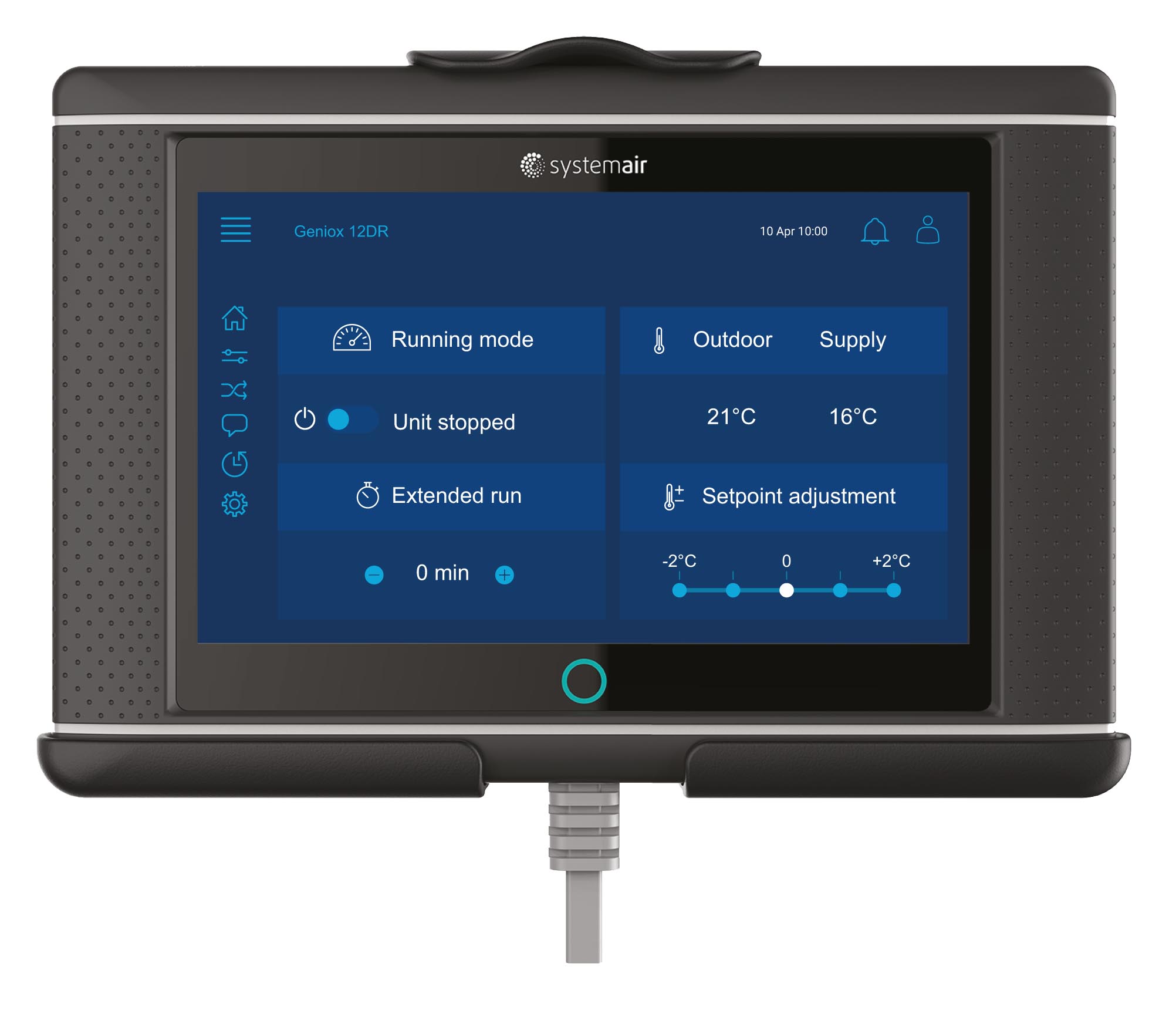|
Access 4.x |
Rotary exchanger configuration example |
Rotational speed of the rotary heat exchanger is controlled either via internal data bus or analog signal (in hardwired rotary drive option).
The table below shows a configuration example of the hardwired rotary exchanger control with alarm monitoring.
Variable |
Available options & Selection |
Note |
|
Sequence selection |
|||
Configuration > Functions > Function activation > Heating/Cooling sequence setup |
|||
Sequence for exchanger |
| SEQ-A | SEQ-B Exchanger |...| |
||
Sequence settings |
|||
Configuration > Functions > Function activation > Heating/Cooling sequence setup > Exchanger |
|||
Type of sequence |
|Cooling | Exchanger | Heating | Damper | Fan setpoint compensation | |
||
Type of exchanger |
| Rotary | Plate | Liquid | |
||
Digital start output |
| No | Yes | |
||
Exchanger alarm |
| No | Yes | |
||
Type of defrosting |
| None | Temperature monitoring | |
||
Frost prevention rotating exchanger |
| No | Yes | |
||
Sequence output when recirculation/support |
| 0% | 100% | Auto | |
||
Sequence output min limit |
0% |
||
Sequence output max limit |
100% |
||
Sequence output when the unit is stopped |
0% |
||
PID Settings |
|||
Configuration > PID controllers > Exchanger |
|||
P-band |
10 oC |
PID settings for the sequence |
|
I-time |
100 s |
||
D-time |
0 s |
||
Hardwired interface to the Exchanger controller |
|||
Configuration > I/O allocation settings > |
|||
Digital inputs > Rotary exchanger alarm |
Any available I/O |
Alarm input from exchanger controller. AL-67 if DI is tripped |
|
Analog outputs > Exchanger (SEQ-B) |
Sequence output to the exchanger controller |
||
Sequence control settings |
|||
Data & Settings > Temperature control > Exchanger |
|||
Start delay exchanger |
0 s |
||
100% exchanger at start up |
2 s |
||
Graphical representation |
|||
Flowchart |
|||
|
75% - indication of sequence output |
||

